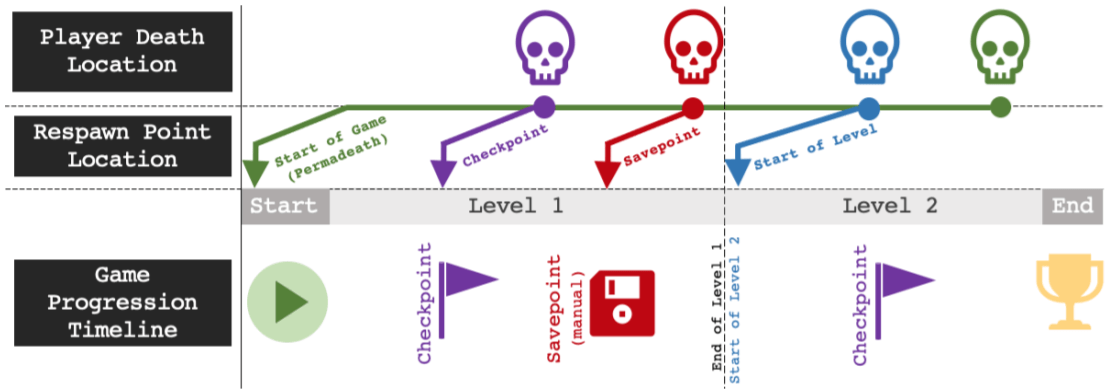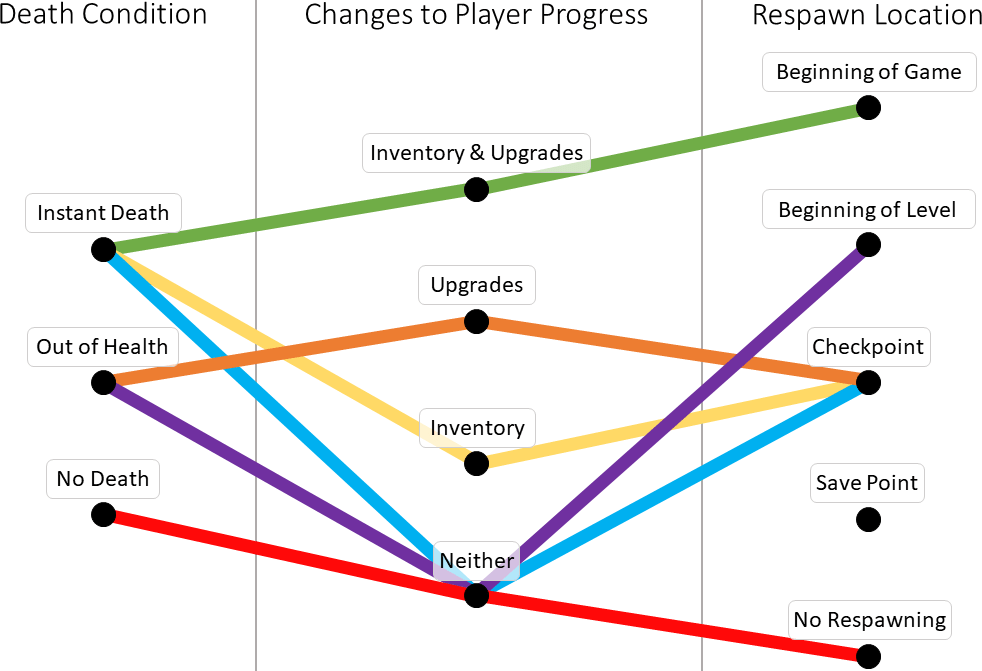
Failure is a central aspect of almost every game, driving player perceptions of difficulty and impacting core aspects of game user experience such as flow. At the heart of failure in many game genres is player death, and platformer games, in particular, rely heavily on the use of death within their design. This work addresses the rich, underexplored space of in-game death (and respawning) through the creation of a generalized taxonomy of death in platformer games. The taxonomy consists of five notable dimensions: (1) obstacles, (2) death conditions, (3) aesthetics, (4) changes to player progress, and (5) respawn locations (see [A]). These different dimensions have a number of potential implications for key aspects of player experience and design (see [B] for common platformer game designs identified using this taxonomy). The taxonomy could also be used to help improve the effectiveness of related engagement techniques such as dynamic difficulty adjustment.

[A]

[B]
Related Publications:
- Cuerdo, M. A. M., Mahajan, A., & Melcer, E. F. (2021). “Die-r Consequences: Player Experience and the Design of Failure through Respawning Mechanics“. In Proceedings of the IEEE Conference on Games. COG ’21, Copenhagen, Denmark.
- Melcer, E. F., & Cuerdo, M. A. M. (2020). “Death & Rebirth in Platformer Games”. In Game User Experience and Player-Centered Design. Springer.
- Cuerdo, M. A. M., & Melcer, E. (2020). ““I’ll Be Back”: A Taxonomy of Death and Rebirth in Platformer Video Games“. In Extended Abstracts of the 2020 CHI Conference on Human Factors in Computing Systems. CHI ’20, Hawaii, USA. ACM.
